The Shamrock Plant - Oxalis regnellii
The first thing to know about Shamrock Plants is that there are many different kinds and varieties, and that many different plants with shamrock shaped leaves are called shamrock plants. Even common clover is called a shamrock plant! This article is about the Shamrock Plant that I have, which is Oxalis regnellii. It is curious, but perhaps not unexpected that the little soil tag insert that came with my plant when I purchased it identifies it as "Irish Shamrock - Oxalis acetosella" which is wrong according to the research I've done.
The second thing to know is that while the Shamrock Plant is often associated with Ireland, it is not native there and actually comes from South America or South Africa, depending on your reference source. It is surprising how much conflicting and cofusing information is out there on the Internet regarding this charming plant.
In any case, here's a photo I took of my own Shamrock Plant.
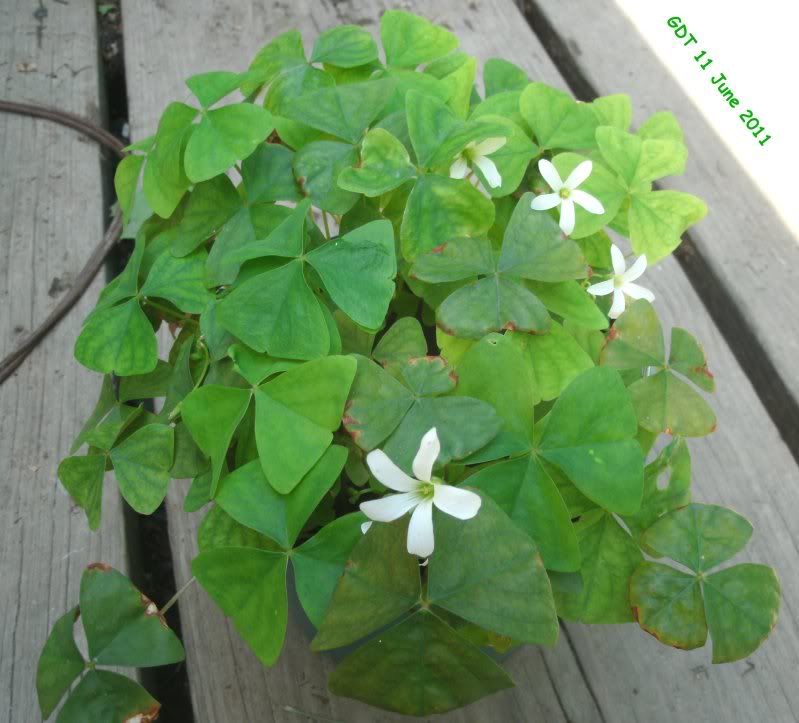
Shamrock plants are of the Family Osalidaceae which is the Wood Sorrel family . They are not winter hearty and must be taken indoors during cold weather. As you can see, the leaves are trifoliate which means the leaves are divided into three leaflets. Now these leaves don't strike me as truly shamrock shaped, but maybe they're close enough, eh? The five-petaled flowers are on seperate stalks.
These plants grow from rhizomes which may be split to form new plants. Rrhizomes, which may also be referred to as creeping rootstalks or rootstocks, are characteristically horizontal stems of a plant that are usually found underground, often sending out roots and shoots from their nodes. This is called vegetative reproduction . Other examples of plants that are propagated this way include hops, asparagus, ginger, irises, Lily of the Valley, Cannas, and sympodial orchids.
And here's a macro of the flower.
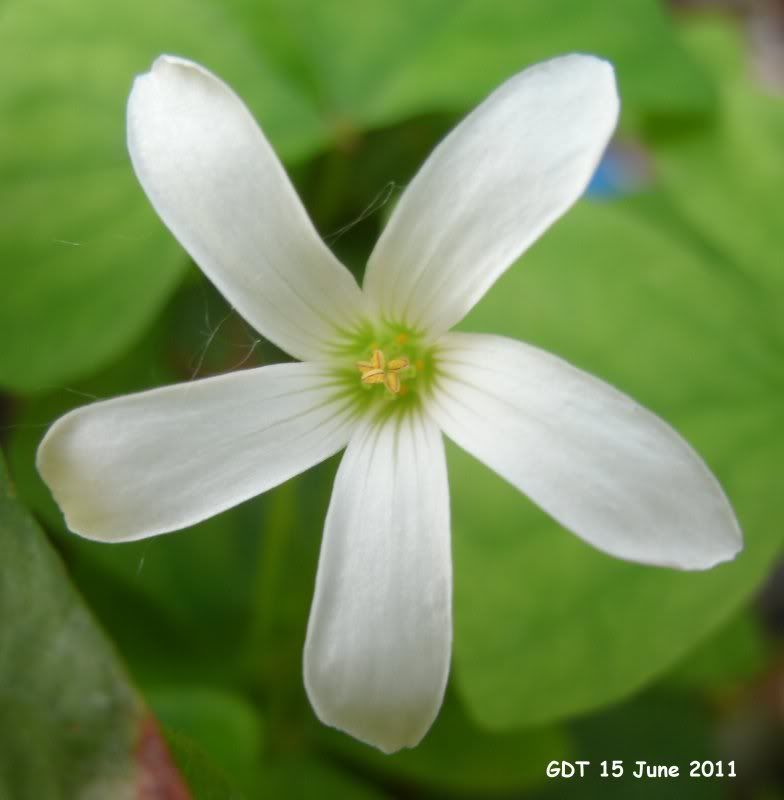
And just because I thought it might be interesting to you, here's an even closer view of the center of the flower.
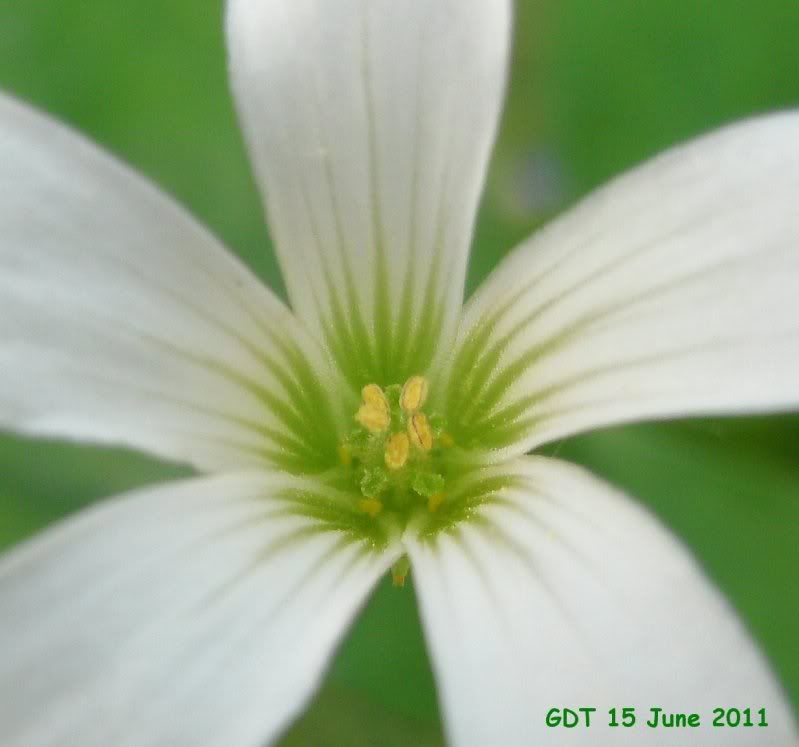
Both the leaves and flowers are phototropic and close at night. This type of behavior is called nyctinastic movement which is associated with diurnal light and temperature changes. Rain and handling the leaves of the Shamrock plant can also induce the leaves to fold up.
Here is a shot of the folded leaves of a plant that I have just handled in order to split a rhizome into a separate plant.
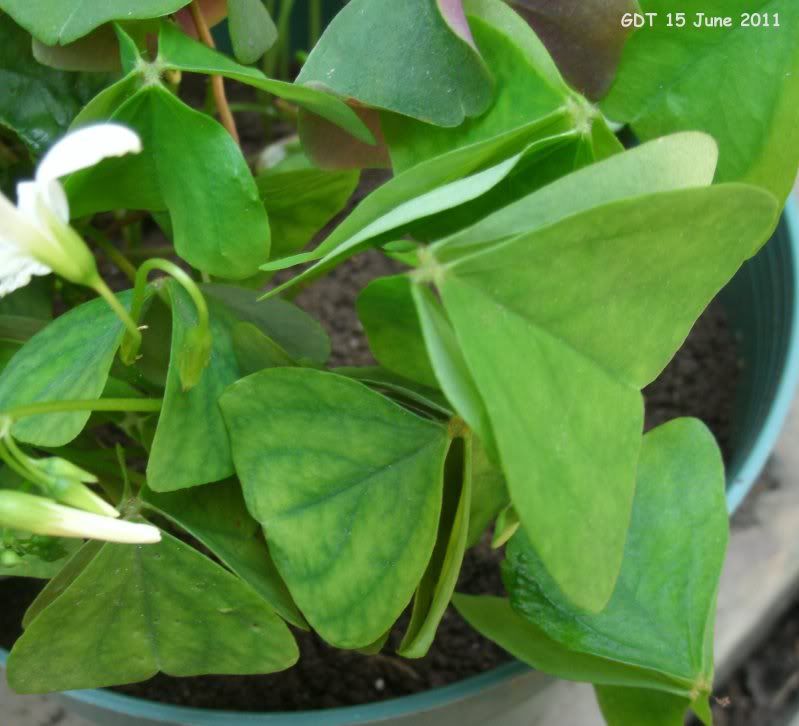
And last, but not least, I leave you with a photo of my Shamrock Plant just after a rain. Apparently, it rained hard enough to close the flowers, but not the leaves.
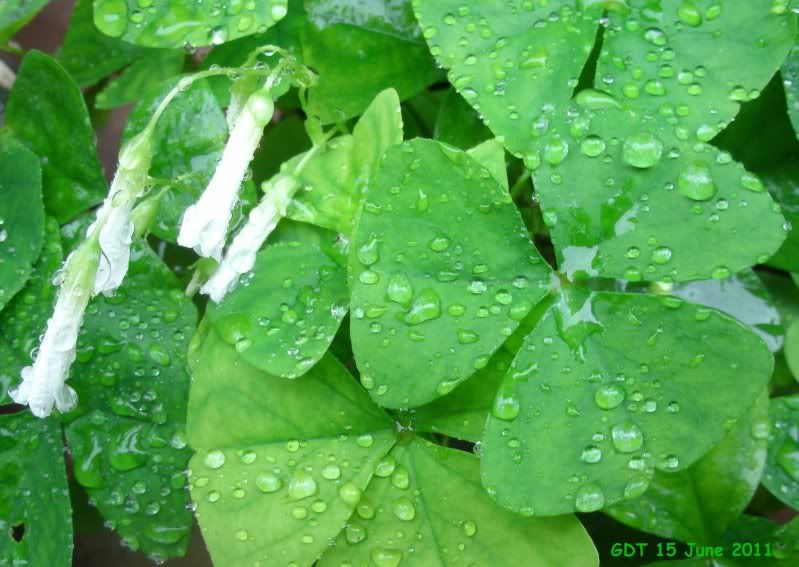
Finally, remember, Shamrock Plants aren't just for St. Patrick's Day anymore!

